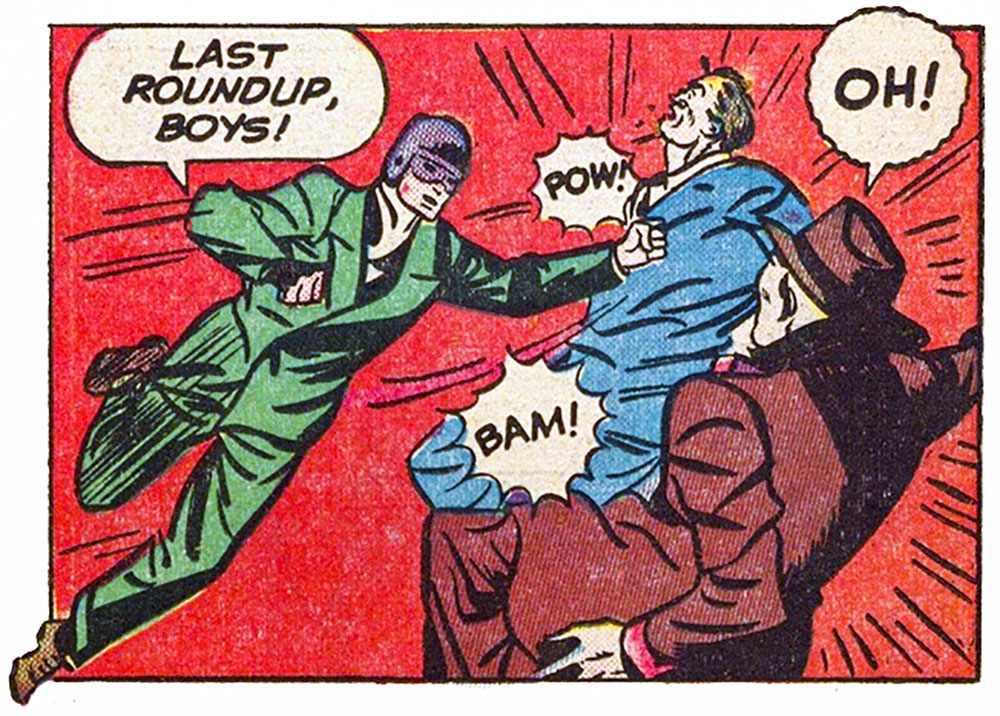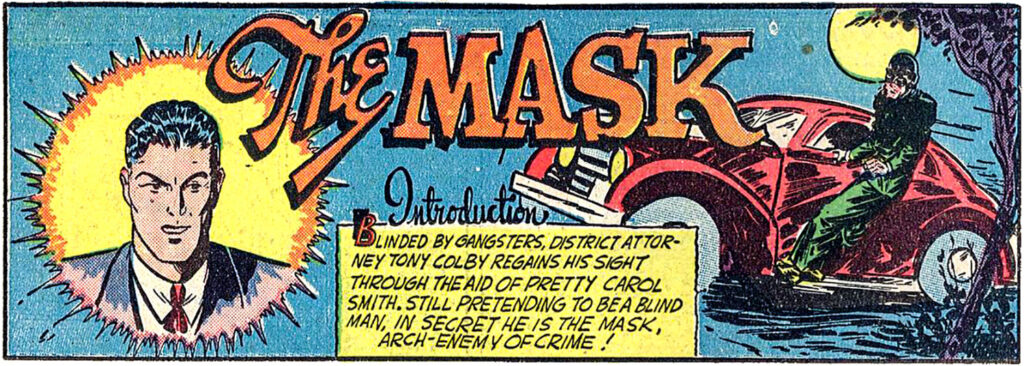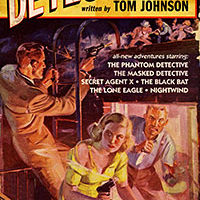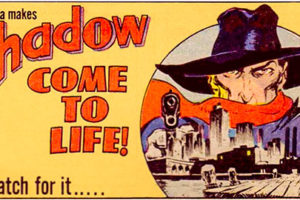The Black Bat was one of Ned Pines‘ more successful pulp heroes coming from his Thrilling line (really Better Publications/Standard Magazines), which ran from 1939 to ’53.
When The Black Bat came out around the same time as Batman from National Allied Publications/Detective Comics Inc. (today known as DC Comics), there was talk that the two companies might go to court due to the similarities.
But thanks to the work of DC editor Whitney Ellsworth, who had worked at Thrilling, things were worked out. The “deal” was that DC would not do any pulp stories of Batman, and Thrilling would not do any Black Bat comicbook stories.
Now if you find this strange, while DC did not have a pulp line, Harry Donenfeld who was the owner of DC did own his own pulp lines — DM and Super/Culture/Trojan, which did girlie and the spicy line of pulps. This included the pulp hero Jim Anthony. So it could have happened.
Thrilling also had their own comicbook line, then known as Nedor which published several superheroes such as The Black Terror.
However, while no Batman-like character appeared in Donenfeld’s pulps, Nedor did bring The Black Bat to comics. However, he’s named The Mask.
The Mask ran in Exciting Comics for the first 20 issues from April 1940 through July 1942. The first story gives the origin of The Mask, which mirrors The Black Bat with just the character’s name changed. We meet young crusading DA Tony Colby (instead of Anthony Quinn), who is working against gangster Oliver Snate (same). When Snate sends a gunman, a man appears to warn Tony. He introduces himself as Silk (again, same) and becomes Tony’s valet. In the courtroom, Tony has a phonograph record that incriminates Snate, who has a gangster dose it with acid that also hits Tony’s eyes blinding him.
Home with just Silk to help him, Tony is approached by a mysterious woman, Carol Smith (Carol Baldwin), who offers him a chance to see again. Tony flies to the Midwest and goes through a procedure to fix his eyes — and he discovers he can also see in the dark. This is not explained how.
Carol reveals that Snate had killed her father, and she wants revenge and returns with Tony. Tony makes a hood-like mask that looks similar to an owl, and with the aid of Silk and Carol, goes after Snite. Tony leaves stickers/notes on criminals he takes out, similar to The Black Bat’s bat stickers. We also see him pretend to be blind to the commissioner to gain info, and briefly meet Lt. McGrath (same). Along the way they pick up Butch O’Leary (also same). After capturing Snate and exposing him, the four vow to fight crime.

As you can see, there are a lot of similarities, but some differences. The outfit has changed; Tony and Carol’s names are changed, but no one else’s. While Tony is blind, he doesn’t wear dark glass, and only in few times does he play up being blind. In fact, in the first story, we are told of his scars, but after that, he is drawn as a handsome man with no scars. Further, in the second story on, Tony is back to being district attorney, whereas Anthony Quinn had to retire after being blinded.
But also over time, some changes would occur.
The Mask’s outfit is the first to change. The owl-like hood/mask is dropped after the second story. Now we have a more conventional hood/mask that exposes his lower face. This would have minor changes, so by the fifth story, it looks more like a leather football helmet of the time, with an eye mask. It is colored a kind of orange, with the Mask wearing a green suit to contrast.
Next change is in the secondary cast. Golden Age comic stories were often short, at about six to eight pages, and having a large secondary cast, in addition to “guest” characters and villains, was often too much. Lt. McGrath and the Commissioner never appear after the first story. And in the seventh story, we are told Silk and Butch are on a vacation, leaving just Tony and Carol to handle the story. From then on, they are the only continued characters. Interestingly, Carol is very much part of the action, often working undercover.
Apart from the first story, I have no idea if any of the remaining stories where adapted from the pulp stories.
Up to now, I hadn’t been able to read these stories, even though they are a product of their time. But thanks to Gwandanaland Comics, they have put out a complete collection of The Mask, which is #1158 in their series. They note that some of the stories were taken from low-resolution microfiche, which aren’t the best. But it’s better to have something than nothing. The folks behind Gwandaland do work to improve their collections, updating them as they can with better scans. But if you want to check out The Mask’s stories, this is your best chance.





Your comments